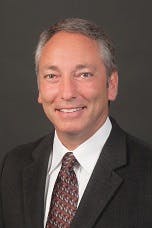We often cringe when thinking about NERC CIP training and even more when thinking about compliance audits, random spot checks and compliance investigations. But, that was not the facial expression on the faces of those who attended the recent NERC Human Performance Conference in Atlanta, especially at the conference social the evening before the kickoff.
For some, sitting at a table of 30 pounds of boiled and steaming crawfish was pure delight. For me, the corn cobs, sausage and potato provided the essential nutrients. I learned a variety of crawfish eating techniques, but I’ll briefly describe one – squeeze, bite the head off and then suck out the insides. Or, something to that effect. I passed. Clearly my human performance was insufficient!
Culinary frivolity aside, the conference was kept on track by Dr. Merlo, VP and Director of Reliability Risk Management at NERC. James has a passion for improving human performance throughout the industry. He is personable and determined, skills undoubtedly learned at West Point and during his 22 year Army career. He brings an infectious tenacity to his quest of surfacing and sharing best practices for learning throughout the industry.
As NERC President and CEO Gerry Cauley shared, “NERC wants to learn through voluntarily submitted events – both actual and near miss -- and then put that learning back out to the industry.” Human performance, which sits at the intersection of predictable human psychology and engineering design, was of course the primary focus and a broad range of speakers from both sides of the equation took the stage.
Human Performance Is Life and Death
We were all sobered to learn that 66 lineman died in the United States in 2016, providing a pointed reminder about why exactly we were in Atlanta. It is a stubborn and distressing statistic for all of us, but it makes one thing clear. The easy answers have already been incorporated into our normal work process. The next round of answers will be more subtle and, at times, require more sophisticated thinking and behavior from all of us.
It will also require a level of personal and corporate courage, which in the past has been hampered by ego/shame and perceived legal risk, respectively. Monika Bay’s presentation about BGE’s Just Culture effort was a compelling example of how to give an account about WHAT was responsible for an event rather than WHO was responsible. She shared examples of the nearly identical appearance of electrical conductor and natural gas pipe, making it difficult for field workers to determine one from the other. She makes the ‘what’ of the potential problem abundantly clear.
Chris Hart, the most recent chairman of the NTSB, shared that “one crash is everybody’s crash.” This recognition brought all parties in the aviation community to the table to collectively work on solutions, a successful path leading to the outstanding flight safety we all appreciate today. A flight crash drives new standards and mitigations for ALL parties, not just the affected airline. As James later pointed out, “one blackout is everybody’s blackout.” As in aviation, we are all usually impacted equally following a significant event.
The nuclear generation industry, through the Institute of Nuclear Power Operations, inspects plants with a team made up of knowledgeable employees from other companies. This is because we can’t detect problems that we have internalized and accepted as normal. The conference provides an opportunity to discuss challenges, near misses and actual accidents and misoperations in an appropriate environment. Different approaches and solutions are then shared and discussed.
In the end, the conference addressed all three components necessary to have a high quality learning event. NERC provided the facility and the expertise, the enabling mechanism or hardware necessary to facilitate information exchange. They also celebrated inquiry, openness and trust, the essential behavioral attributes or the software necessary to mitigate natural resistance to difficult disclosure. Lastly, they provided the proper context by focusing on the human performance issues in our industry. The tolerance for discussing errors in a safe environment was as clear as the collective commitment to learning.
I am glad to report that most of the presentations are available freely at http://www.nerc.com/pa/rrm/hp/Pages/default.aspx. Don’t miss the chance to expand your HP knowledge and insights and share what you know in your company and with your peers. We all have a stake in safety. Let’s use James as an example and work hard to safely serve our industry.



